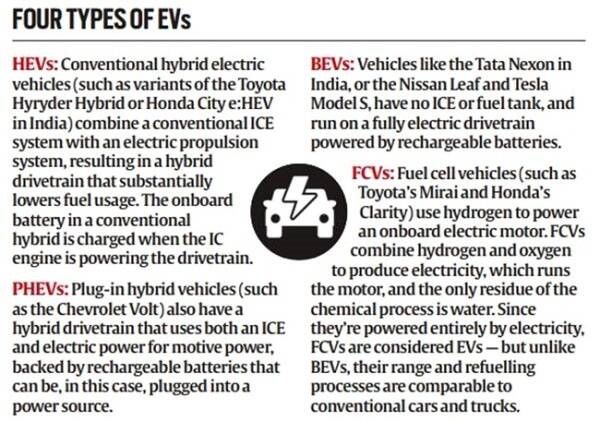900 319 0030
enquiry@shankarias.in
Battery Electric Vehicles (EVs) are seen as push for net zero but there are some challenges with respect to Indian scenario.
Types of EVs

More than 90% of the global Li production is concentrated in Chile, Argentina, Bolivia, Australia and China. Lithium Triangle Countries - Argentina, Bolivia, Chile
References